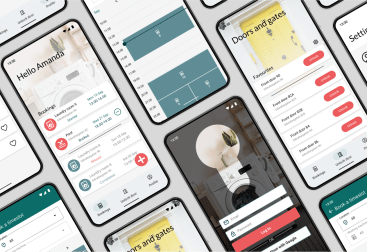By Amanda Djäknegren, Christoffer Boman, Hanna Sinclair Dahlström, Frida Grothérus, Alexandra Rosén and Arwin Saleh
In my bachelor thesis at Chalmers in collaboration with tech-consultant company Together Tech (previously i3tex), a concept for a navigational aid for people with a visual impairment was created. The purpose of this product was to enable a user-friendly way of navigation and to offer this user group a higher degree of independence. Through extensive information gathering through interviews and observations, aimed at creating an in-depth understanding of the users needs and usage situations, we found that users found it difficult to navigate unknown places with existing aids.
Our concept, which is placed on the forearm, uses vibration as a principle for haptic transmission of information during navigation, instructing the user through vibrating in different patterns over their arms. Since the information is transferred to the user via vibration, the concept doesn’t occupy the hands nor hearing in order to not reduce the users’ ability to use this navigation aid in combination with, for example, a white cane.
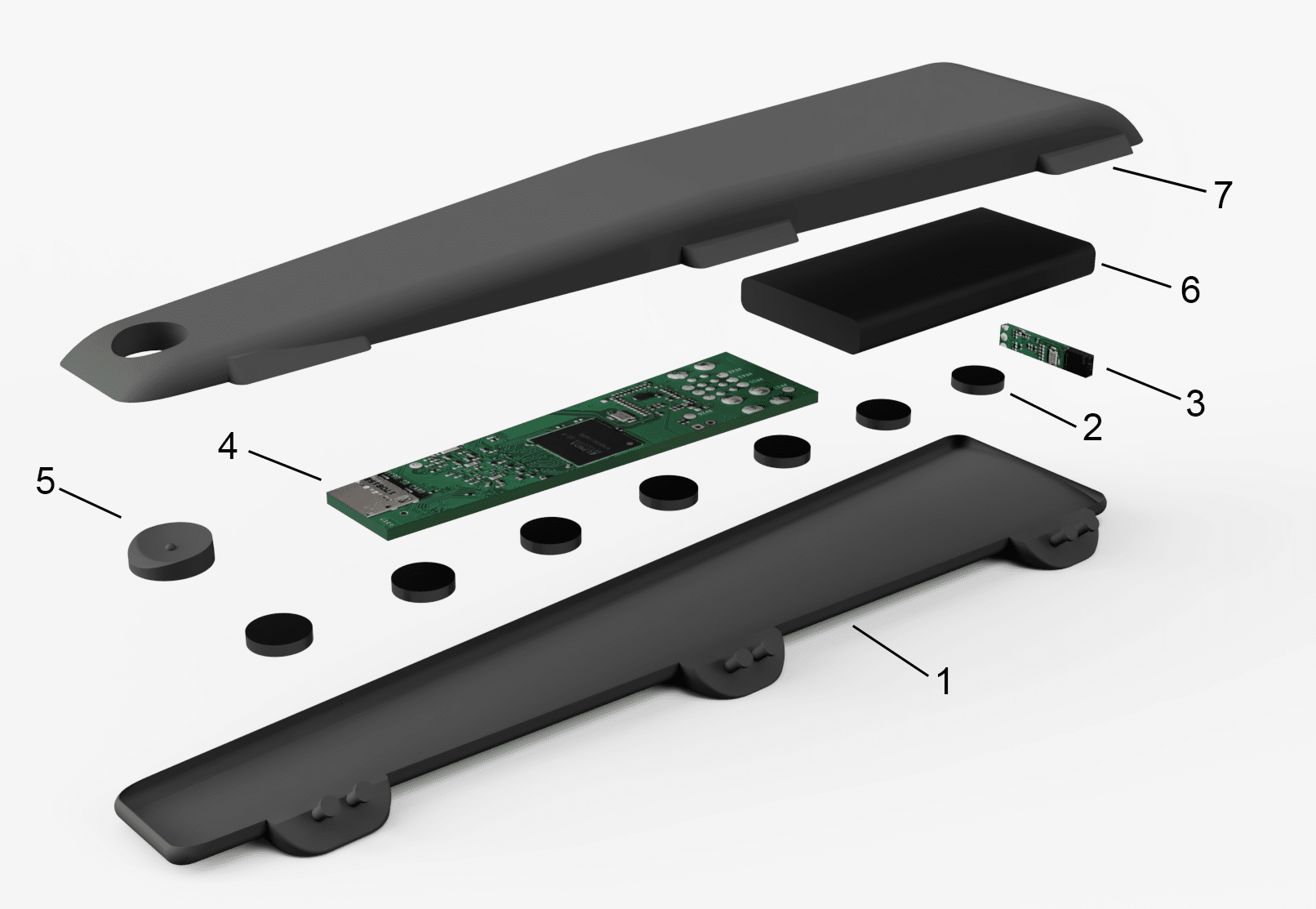
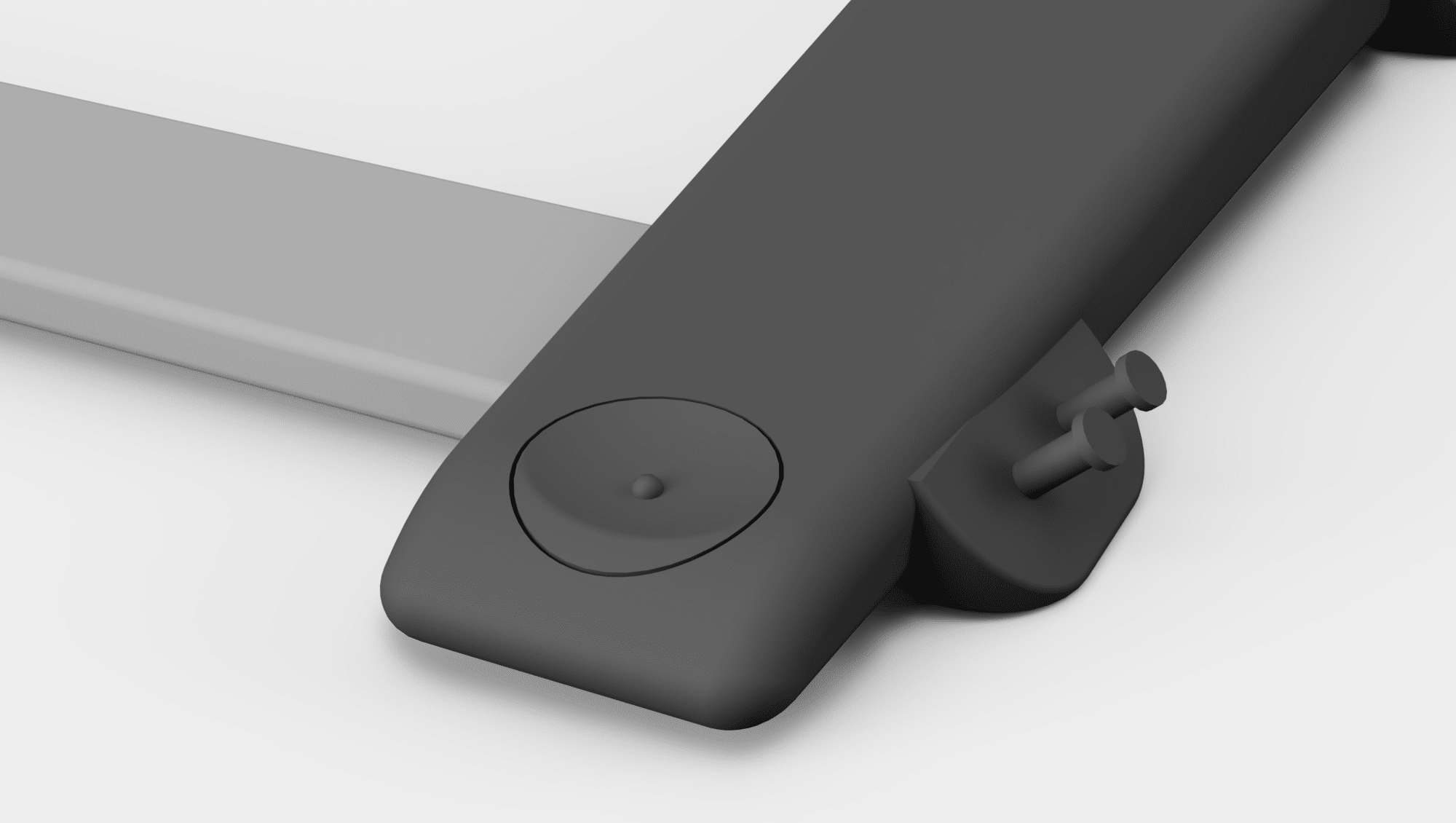
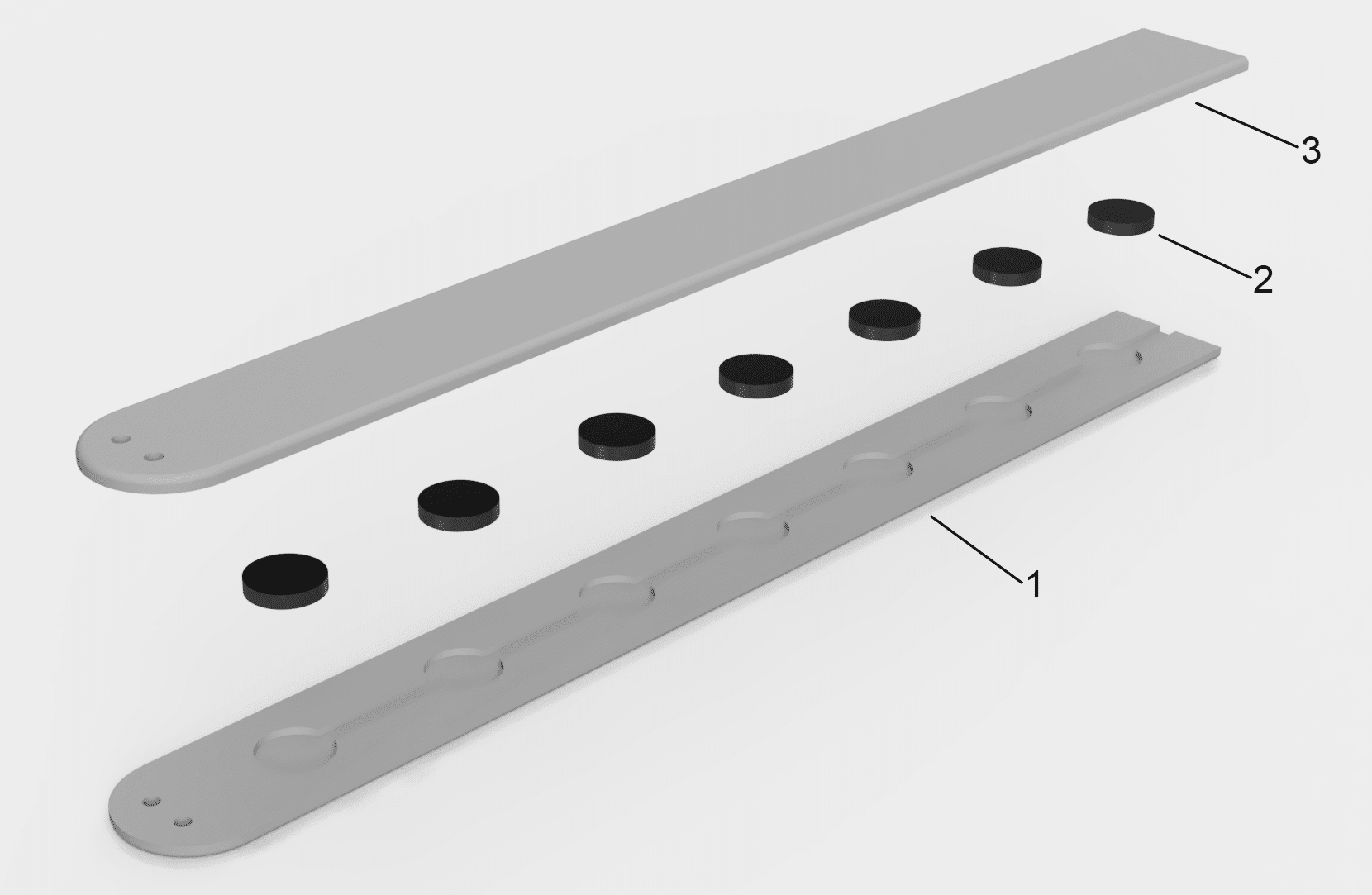
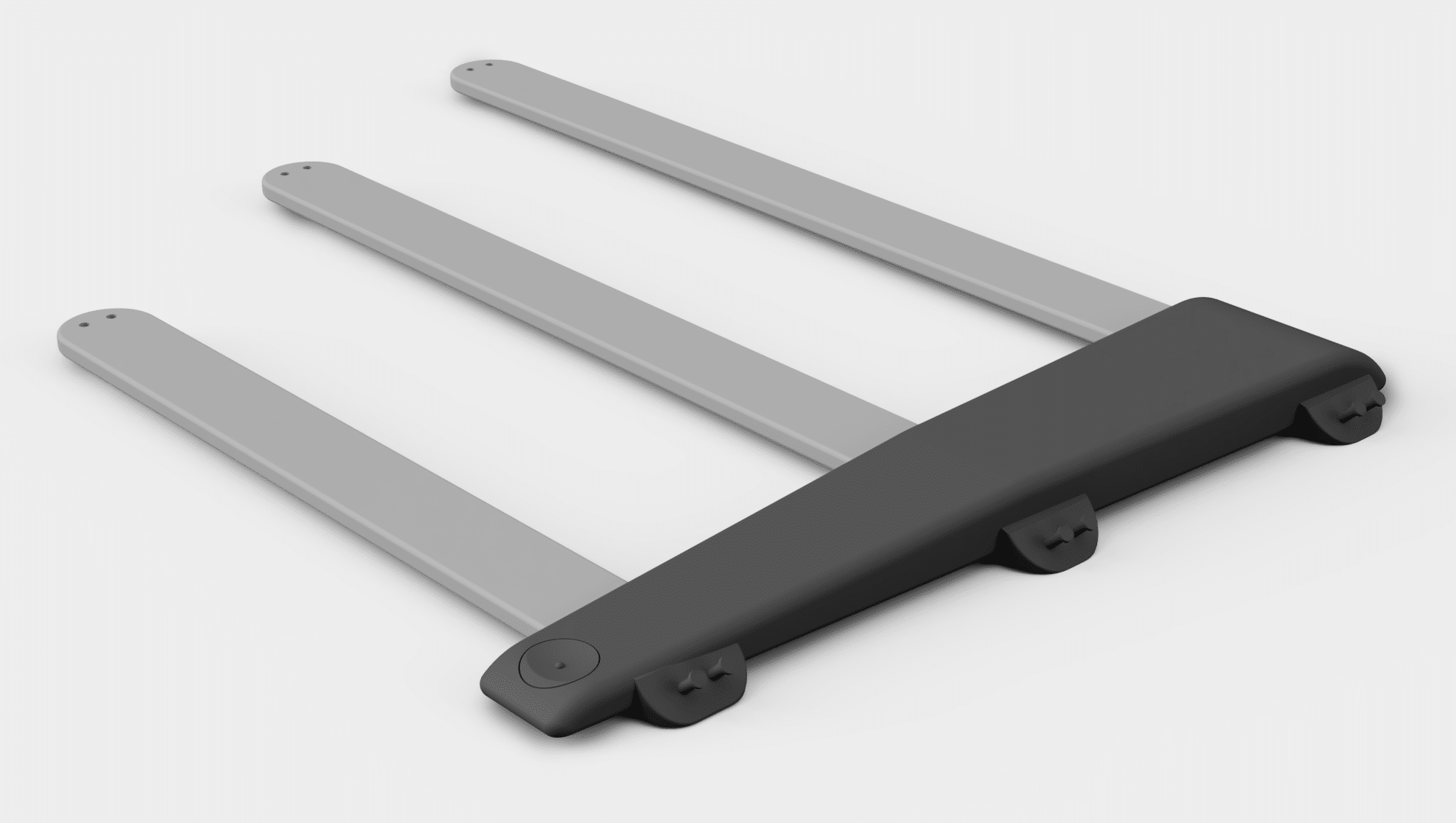

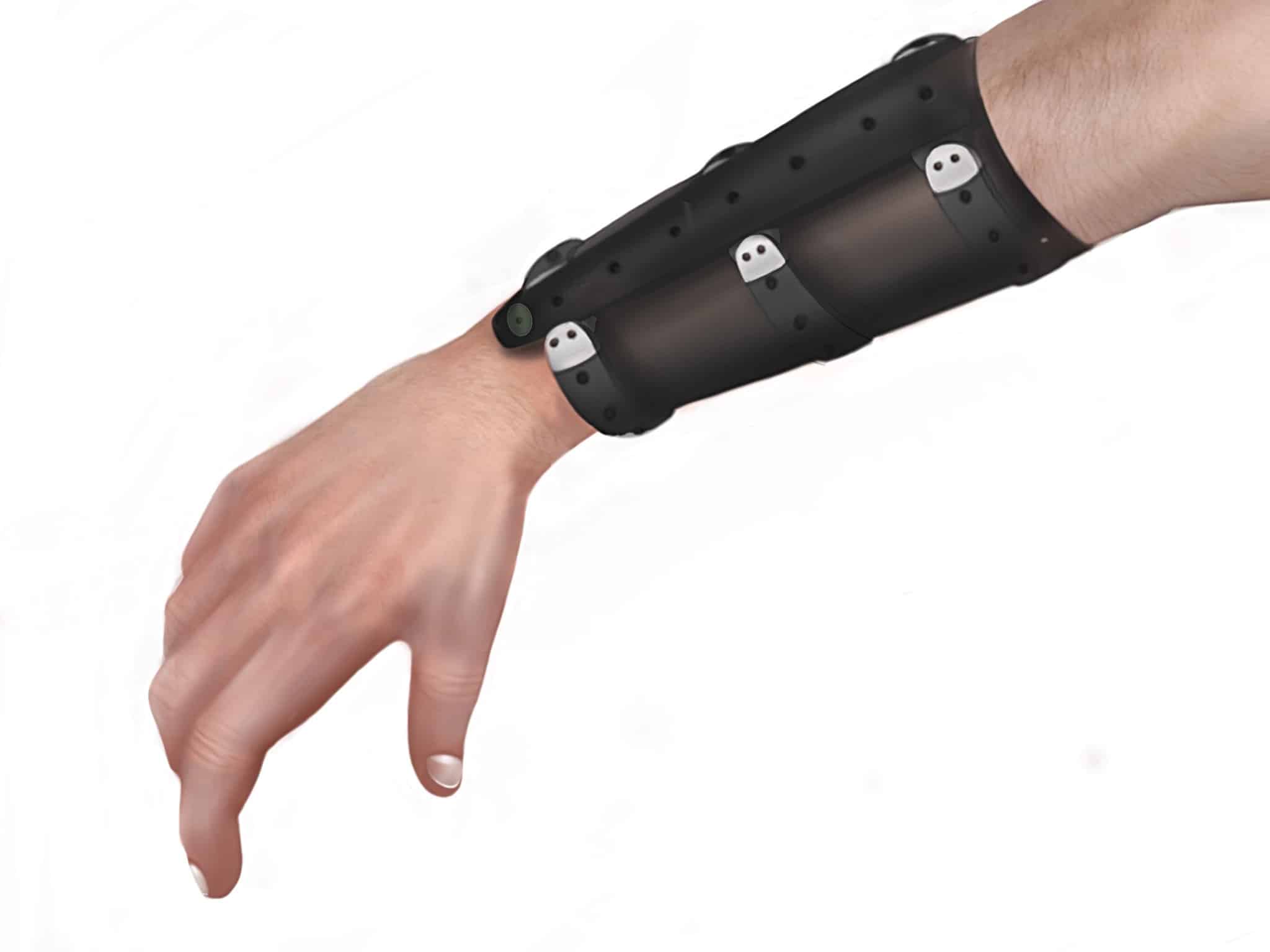
The final concept has main unit which is connected to the three horizontal bands that attach around the arms. The main unit contains 7 vibration motors, and each of the bands contain 7 vibration motors, making it 28 vibration motors in total which vibrate in different patterns to communicate both navigational cues, warnings about objects in the environment that the user risk walking into, and route info. This haptic language was designed with discernibility in mind.
An important aspect taken into account during this project was the user’s attitude towards their visual impairment and other aids. Consequently, the product was designed to be discreet so that the choice of showing one’s visual impairment stays with the user.
A detailed report (in Swedish) about this project has been published on Chalmers Open Digital Repository.
Process
In order to understand the user group, a number of qualitative interviews were conducted with people with blindness. An interview was also conducted with a trainer of guide dogs to understand how the dogs quietly communicate to their owners when they help them navigate, which worked as a great source of inspiration for the final concept. Literature studies were also conducted to further understand haptics, vision impairment, and the possibilities and drawbacks of existing solutions on the market.
Once this information had been gathered, a number of experiments were conducted in order to understand the effectiveness of different ways of transferring the information haptically on different parts of the body, through for example vibration, pressure, or a stroking movement. These experiments resulted in three concepts – a product placed on the forearm, a product placed on a person’s back, and a product placed on the back of the hand. These concepts were then prototyped using small vibration motors, and an arduino, and subsequently tested by different individuals of the group. We found that how well the vibrations were felt were highly individual, but that having a certain spacing between the vibration motors made them more distinguishable. It was also found that vibrating the motors in a sequence when they were placed in a row was easier to recognise then a vibration from a single motor.
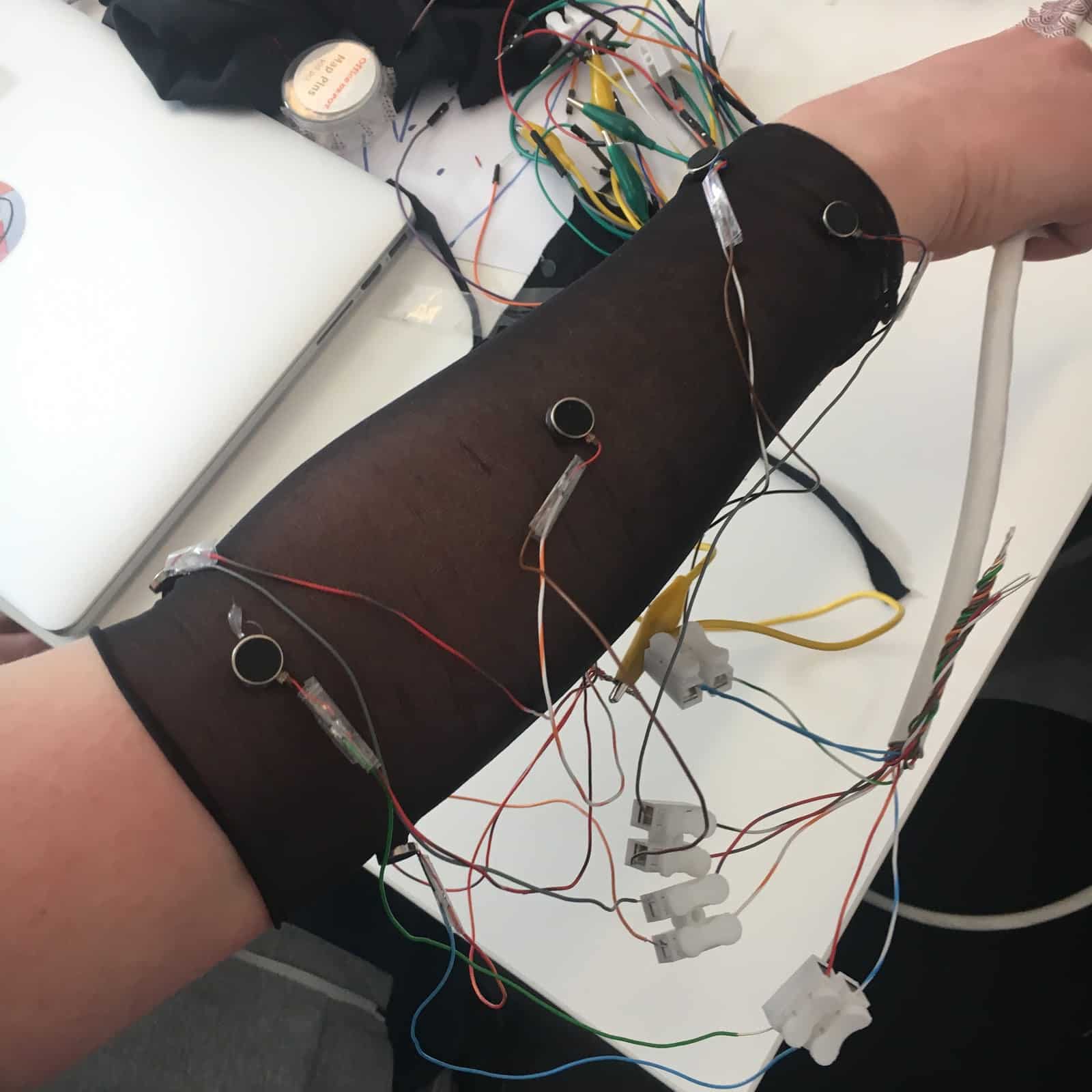

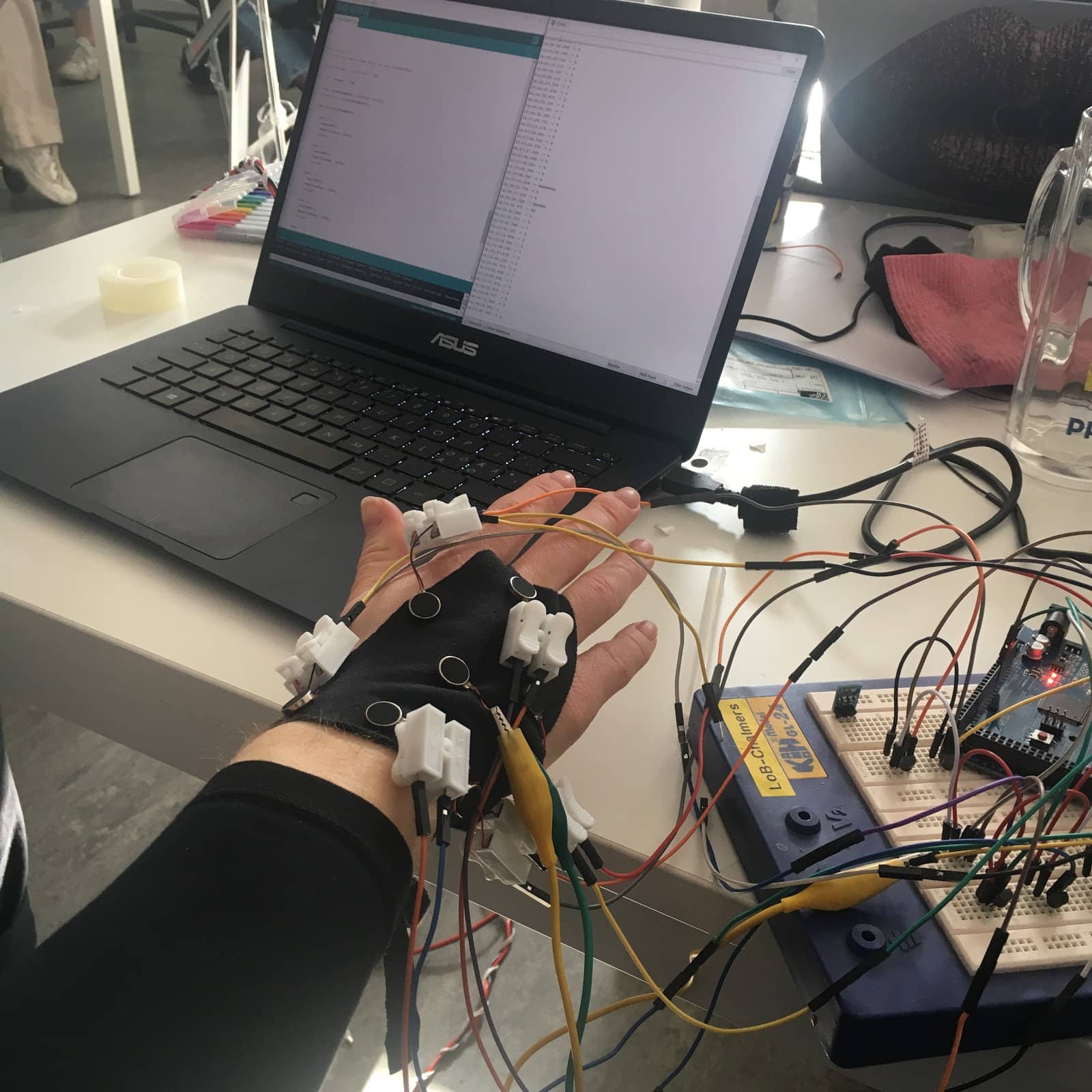
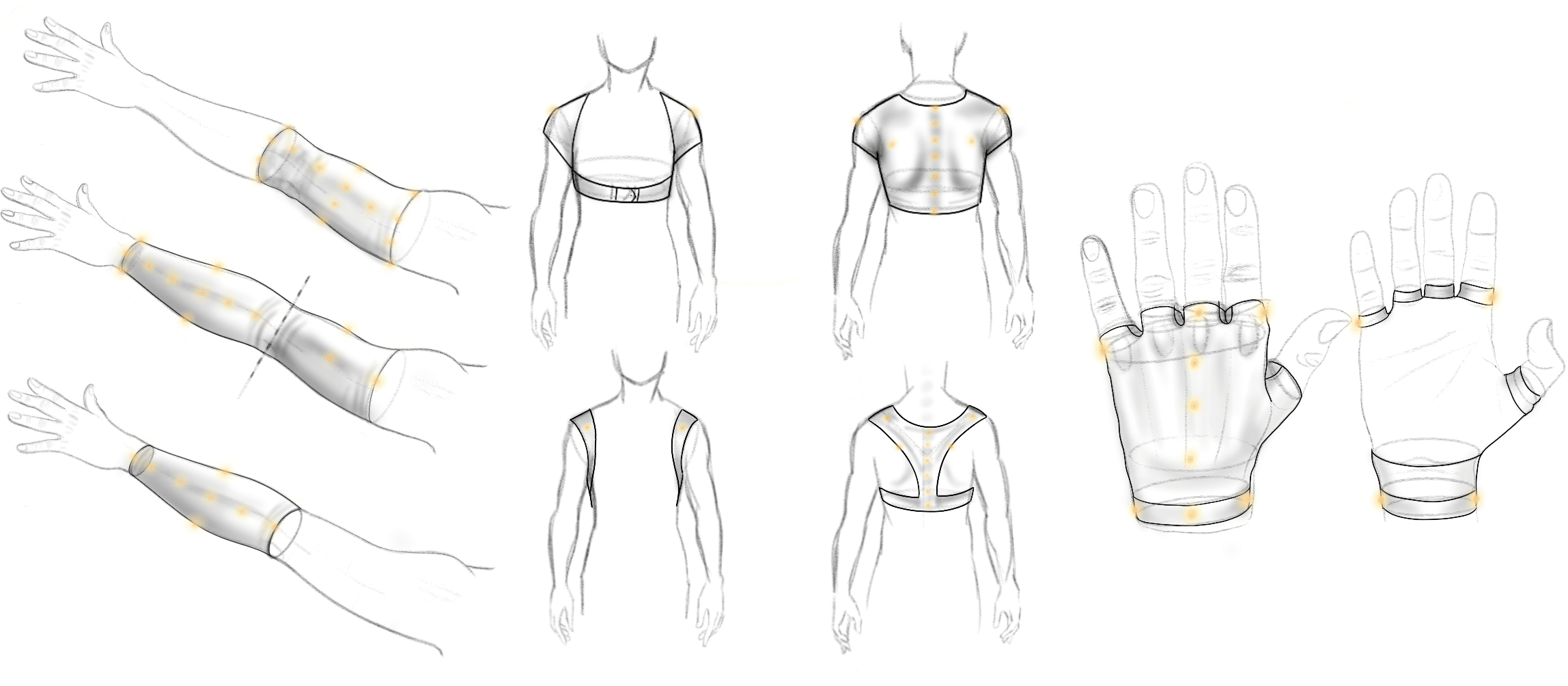
These prototypes were also evaluated with users where they got the different products described to them. Valuable feedback was collected regarding how easy they thought it would be to put the product on, how easy it would be to use, and in what situations they would use the products. This, along with the result of the prototype evaluations lead to the choice of the forearm solution. After the placement of vibration motors had been finalised, the haptic language was developed.
In addition to the functional prototype, a prototype was created to communicate the planned form of the final product. This model was created in Fusion 360 and 3D-printed in PLA and TPU, and the cover which assists in keeping the bands in contact with the body was sewn by hand.




